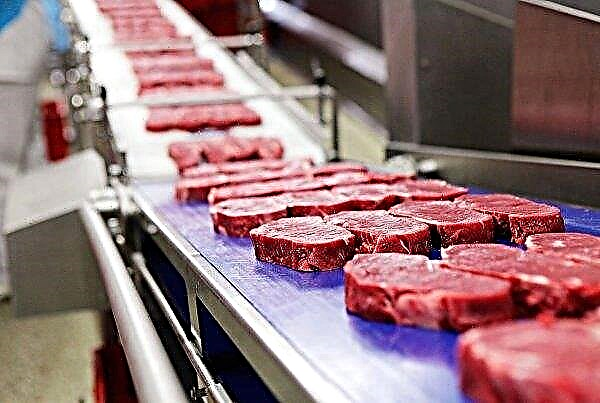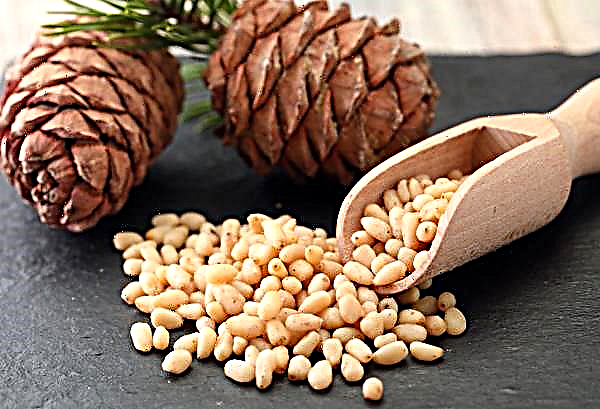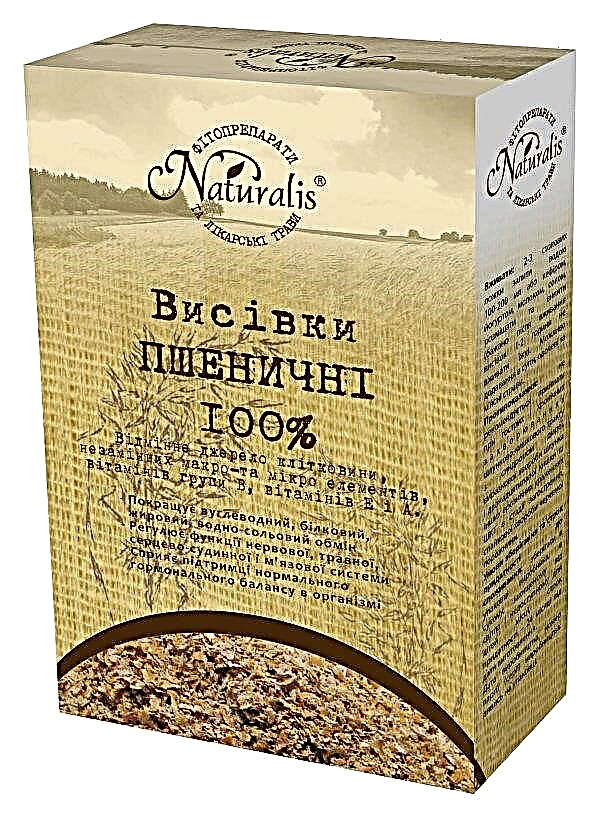Chickens are rather gentle poultry, which are often overcome by various infections. One of the most dangerous infectious diseases is bird flu. He is able in a short time to destroy almost all livestock on the farm. In addition, it is dangerous for humans. Read about the symptoms, methods of prevention and treatment of a dangerous illness in this article.
Chicken flu and its description
Avian influenza is a particularly dangerous viral disease that spreads from bird (animal) to bird and affects the digestive tract and respiratory system. The disease is characterized by high mortality. Depending on the raging strain on the farm, 10% to 100% of the number of birds may die. There are 2 most pathogenic for the feathered subtype of the virus: H5N1 and H7N9. In total, it is known that there are 15 types of infection.
Did you know? For the first time, the bird flu virus was described by a veterinarian from Italy, Eduardo Perronchito, in 1878. He called it typhoid fever.
Danger of the disease and transmission of the disease
The carriers of the virus are wild birds, mainly ducks. They have increased immunity against the disease, so they themselves do not get sick. Also, rodents, cats, parrots can be sources of the virus. The causative agent is transmitted through food, feeders, drinking bowls, trays for carcasses and eggs. Contagious are not only living birds, but also dead ones, as well as their eggs. Influenza affects all types of poultry. It was first discovered among birds in China. In Russia, the first case was registered in 2006. People can get bird flu. The first infection was registered in 1997 in China. Of the 18 cases, 6 people died. In 2013, 453 cases and 175 deaths from the H7N9 virus subtype were recorded in China. Registration of the last death occurred in Canada in 2014.
Influenza affects all types of poultry. It was first discovered among birds in China. In Russia, the first case was registered in 2006. People can get bird flu. The first infection was registered in 1997 in China. Of the 18 cases, 6 people died. In 2013, 453 cases and 175 deaths from the H7N9 virus subtype were recorded in China. Registration of the last death occurred in Canada in 2014.
Symptoms of the disease in chickens
The incubation period of a viral disease is 2–5 days. This is the time from the moment the virus enters the body until the first symptoms appear.
Did you know? Not only feathered, but also pigs are affected by bird flu. All types of human flu and swine virus are also dangerous for them. Scientists believe that if several different strains are found in one animal, they can mutate, as a result of which the bird virus will be transmitted from person to person.
Acute form
In order to respond in time to the occurrence of a disease in the chicken coop, you need to know how it manifests itself.
With the development of the acute form, the following symptoms are characteristic:
- refusal of food;
- copious discharge of tears;
- sneezing
- depressed state;
- change in the state of plumage for the worse;
- decrease in egg production;
- the appearance of eggs with softened shells;
- disturbances in the work of the respiratory system;
- staining the crest in blue;
- impaired coordination of movements;
- diarrhea;
- increased feeling of thirst;
- increase in body temperature to + 43 ... + 44 ° С.

Signs of central nervous system damage
In severe cases, there are such signs of damage to the central nervous system:
- uncoordination of movements;
- cramps
- neurosis.
H5N1 Flu Symptoms
In the case of infection with a deadly subtype of H5N1, the following symptoms are observed:
- hemorrhage in the internal organs;
- violation of blood circulation;
- cerebral edema.
Important! If typical signs of bird flu are detected, the diseased bird should be immediately quarantined and reported to the local veterinary service.
Diagnosis of the disease
A preliminary diagnosis can be made only after examination of sick chickens and fixation of symptoms. An accurate diagnosis of the disease is made only after the death of the layers. Examine the blood serum for the presence of antibodies to the virus. An autopsy is performed to examine hemorrhages.
Features of the treatment of bird flu in chickens
Chickens with bird flu are not treated. All sick individuals are destroyed, their carcasses are burned. In the economy where the outbreak is recorded, quarantine is declared. Meat and eggs from sick laying hens are unsuitable for food.
Avian Influenza Prevention
To prevent the disease from entering the chicken coop, it is necessary:
- Grow chickens in compliance with all sanitary standards.
- Prevent their walking in places where they can come into contact with wild birds.
- When acquiring a new population, check veterinary documents.
- Maintain new chickens in quarantine for at least 20 days.
- Do not purchase birds from dubious farms.
WHO recommendations for personal protection
Since bird flu is dangerous for humans, the World Health Organization has developed recommendations on how to behave in order to avoid infection:
- Do not come into contact with wild birds and poultry showing signs of disease.
- Do not touch dead birds.
- The carcasses of sick birds need to be burned, protecting the hands and respiratory tract with special protective equipment.
- Do not eat meat and eggs that have undergone insufficient heat treatment.
- Keep eggs and chicken meat away from other products in the refrigerator.
- If you find the body of a dead bird, you should immediately notify the local veterinary service.
- Wash eggshell with soap before use.
- After cutting the carcass, wash the cutting board and hands with soap.
- Do not purchase eggs and carcasses of chickens from dubious sources.
 Avian influenza is a dangerous viral disease that cannot be treated in birds.
Avian influenza is a dangerous viral disease that cannot be treated in birds.Important! If, after contact with a bird, a person has symptoms of influenza or SARS, you should immediately consult a therapist.
Infection can only be avoided by observing sanitary and hygienic standards, quarantine measures and carefully choosing the stock for acquisition.












